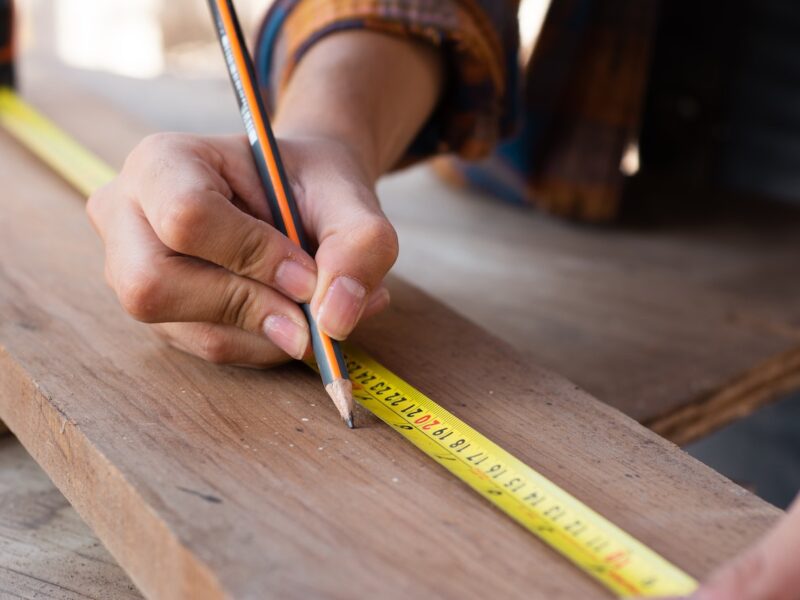The metric system is a standardized system of measurement used around the world, based on units of length, mass, and time. It was created in the late 18th century in France, during a period of significant scientific and social change. In this article, we will explore the origins of the metric system and its creators.
What Were the Origins of the Metric System?
In the late 1700s, France was undergoing a period of radical social and political change. The French Revolution, which began in 1789, marked a significant shift in power from the aristocracy to the people, and brought about many new ideas about equality and democracy.
At the same time, the scientific community in France was also undergoing significant changes. The Academy of Sciences, a prestigious organization that had long been dominated by aristocrats, began to admit more middle-class and working-class members, and to focus more on practical applications of science.
One area of particular concern was the need for a standardized system of measurement. At the time, there were dozens of different systems of measurement in use around the world, making it difficult for scientists and merchants to communicate and collaborate effectively.
In 1790, the Academy of Sciences proposed a new system of measurement based on the principles of decimal arithmetic. This system, known as the metric system, was intended to be universal, simple, and easy to use.
The Creators of the Metric System
Several prominent scientists and scholars played a key role in the development of the metric system. These include:
- Jean-Charles de Borda: A mathematician and naval officer who developed a new instrument for measuring angles and conducted experiments to determine the shape of the Earth.
- Pierre-Simon Laplace: A mathematician and astronomer who made significant contributions to celestial mechanics and the theory of probability.
- Adrien-Marie Legendre: A mathematician who worked on a wide range of mathematical problems, including number theory and statistics.
- Joseph-Louis Lagrange: A mathematician and physicist who made significant contributions to the study of calculus, mechanics, and optics.
- Gaspard de Prony: An engineer who oversaw the creation of the first standardized weights and measures in France.
These and other scientists and scholars worked together to develop a comprehensive system of measurement that would be based on easily reproducible standards and principles.
The Components of the Metric System
The metric system is based on three fundamental units of measurement: the meter, the kilogram, and the second. These units are used to measure length, mass, and time, respectively.
The meter is defined as the distance traveled by light in a vacuum in 1/299,792,458 seconds. This means that the meter can be reproduced exactly using only the speed of light and the unit of time.
The kilogram is defined as the mass of a particular cylinder of platinum-iridium alloy that is kept at the International Bureau of Weights and Measures in France. This cylinder is known as the International Prototype Kilogram, or IPK.
The second is defined as the duration of 9,192,631,770 periods of the radiation corresponding to the transition between the two hyperfine levels of the ground state of the caesium-133 atom.
In addition to these fundamental units, the metric system also includes a range of prefixes that can be used to indicate larger or smaller units of measurement. For example, the prefix kilo- means “thousand,” so a kilogram is equal to 1,000 grams.
Advantages of the Metric System
The metric system has several advantages over other systems of measurement, including:
- Universal adoption: The metric system is used by the vast majority of countries around the world, making it a universal language for scientific and commercial purposes.
- Ease of use: The metric system is based on decimal arithmetic, making it easy to learn and use. This makes it easier for people from different cultural and linguistic backgrounds to communicate and collaborate effectively.
- Scalability: The metric system is highly scalable, with a wide range of prefixes that can be used to indicate larger or smaller units of measurement. This makes it suitable for use in a wide range of applications, from measuring the length of a single cell to the distance between planets.
- Standardization: The metric system is highly standardized, with clear definitions for each unit of measurement. This makes it easier to compare and replicate measurements across different locations and contexts.
- Accuracy: The metric system is based on precise scientific measurements, making it more accurate than many other systems of measurement.
Disadvantages of the Metric System
Despite its many advantages, the metric system also has some disadvantages. These include:
- Resistance to change: Some people may be resistant to the metric system due to cultural or historical reasons. For example, in the United States, the English system of measurement is deeply ingrained in the culture and may be difficult to replace.
- Cost: Transitioning to the metric system can be expensive, as it may require changes to equipment, processes, and educational materials.
- Complexity: While the metric system is generally easy to use, it can be more complex than other systems of measurement in certain contexts. For example, in some areas of physics and engineering, specialized units of measurement may be required that are not part of the standard metric system.
The metric system is a standardized system of measurement that was developed in France in the late 18th century. It is based on three fundamental units of measurement: the meter, the kilogram, and the second, and is highly scalable and easy to use. While the metric system has many advantages over other systems of measurement, it also has some disadvantages, including resistance to change, cost, and complexity in certain contexts, as previously mentioned. Despite these challenges, the metric system is widely used around the world in many places, and it just so happens to be very much an important tool for science, commerce, and communication.


